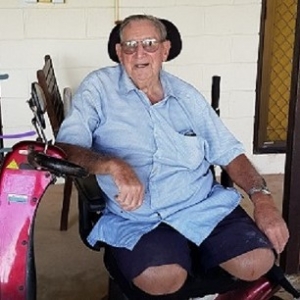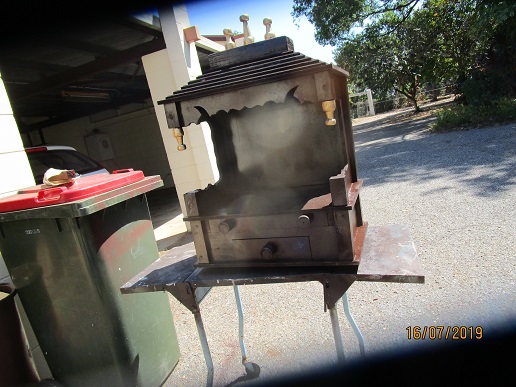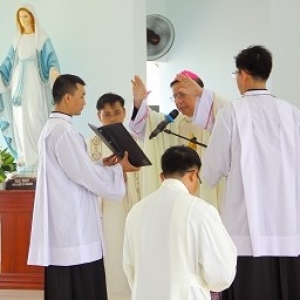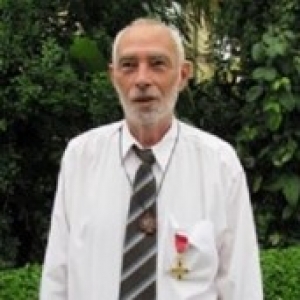Peter MALONE
Acknowledging Herman Kooyman MSC, 85.
Acknowledging Herman Kooyman MSC, 85.
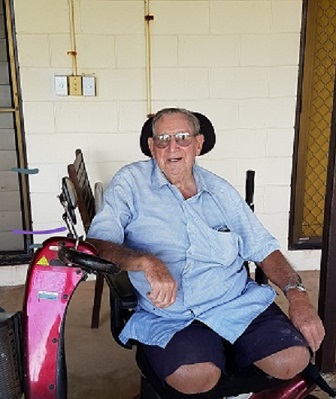
Congratulations to Brother Herman Kooyman MSC on his 85th birthday.
Born in Holland, Herman migrated to Australia. He made his profession on26th February 1964. He worked in MSC schools and in more recent times in the Northern Territory where he still is.
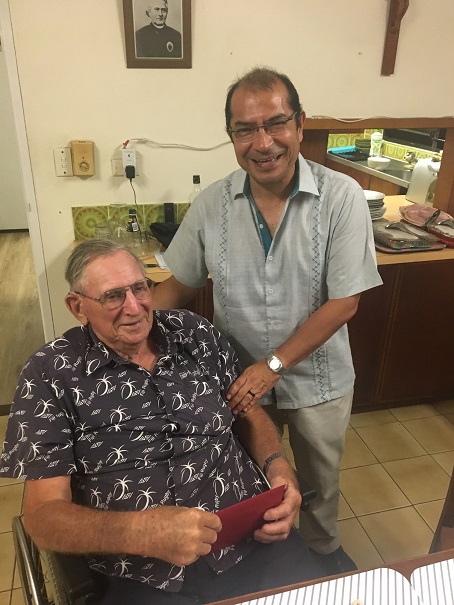
With Abzalon, Superior General
Here are some quotes from a message last year and posted on this site,
From 2019; ‘Herman Kooyman reports that he has a new mobility scooter to zip around Darwin on.’
He says “I am quite happy with it, only the batteries are a lot smaller. We made a wooden box and fixed that on the scooter with two extra batteries. So now Bro. Ted (Ted Merritt) thinks that I should be able to do about 50 kms on the batteries. That is even better than my old scooter.
I am including a photo of the Hindu temples I made and so far I have made 22 of them. But that is the last of them for me because they are just too hard for me to make. I still have other jobs so I will not run out of work.”
He is still making things. His latest project is making homes for birds.
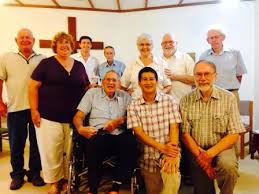
2014, Golden Jubilee of Profession and the Darwin Community
MSC Vietnam. Ordination of Diaconate Ceremony, Thi and Bang
MSC Vietnam. Ordination of Diaconate Ceremony
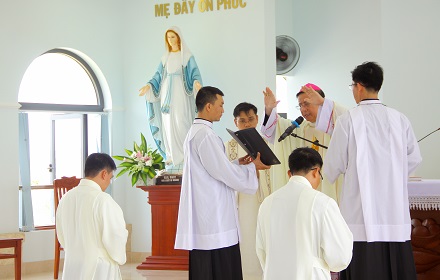
On the Friday morning of August 21, 2020, members of the Vietnamese MSC community (the MSCs in Vietnam) gathered together at the very nice and warm Chapel of Pastoral Central of Phu Cuong Diocese (neighboring diocese to Saigon diocese) with a few relatives of the family of Dominic Savio Bang Hai DINH, MSC and Francis Xavier Thi Dinh NGUYEN, MSC to attend the Ordination of Deacons ceremony.

The presider was bishop Joseph Nguyen Tan Tuoc of Phu Cuong Diocese together with MSC priests and fr. Joseph Luc of the diocese as concelebrants. Some OLSHs and MSC sisters were also with us.
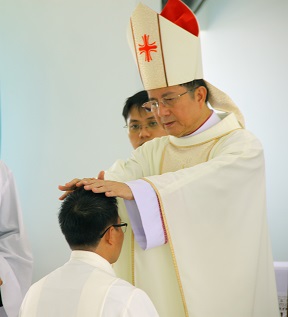
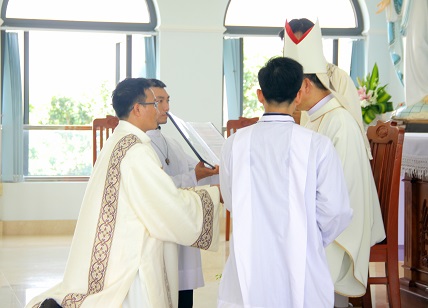
We had to limit the number of guests because of the pandemic. Actually only brothers and sisters of MSC family and families of our two deacons attended the ceremony. Yet the ceremony took place earnestly, solemnly and warmly.

Bang
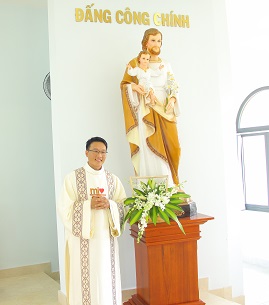
Thi
After the ceremony, everyone moved to our community house in Go Vap district and had an intimate lunch together.
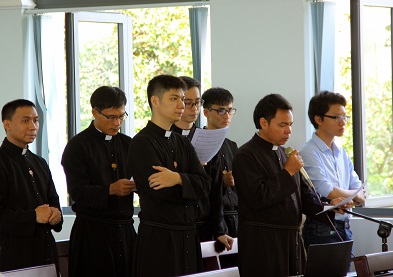
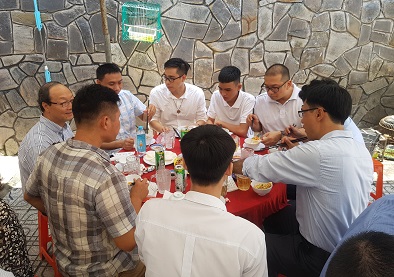
Thank God through the intercession of the Holy Mother for granting The MSC Vietnam many great special graces of blessings to the Br.Thi and Br.Bang in their new missionary roles as Deacons.
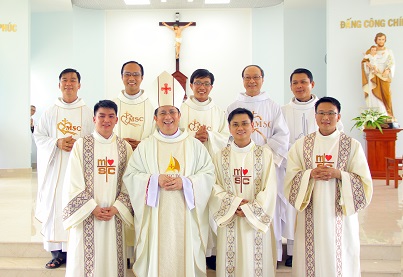
Thanks Br. Hung Quoc Le, MSC for this information.
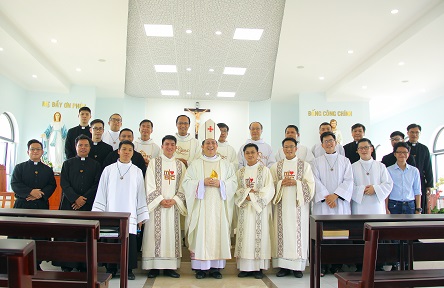
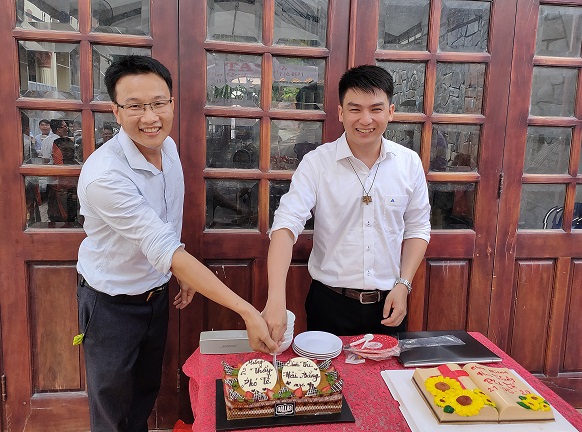
Paul Jennings MSC, Golden Jubilee of ordination, August 29th.
Paul Jennings MSC, Golden Jubilee of ordination, August 29th.

Congratulations to Paul Jennings on the occasion of this Golden Jubilee. This year he has been at Sacred Heart Monastery, Kensington. Most of his ministry has been in Papua New Guinea.
This is a reprint of a tribute to him when he received the OBE, reminding us of his achievement in PNG.
Fr Paul Jennings MSC was awarded an OBE by the Government of Papua New Guinea in the Queen’s birthday honours list, for services to education and the Church in Milne Bay and Papua New Guinea.

Paul has worked in education in Papua New Guinea for most of his life as a priest, since 1971. He was a long serving Headmaster of Sacred Heart High School at Hagita, in Milne Bay, for 12 years and at the same time worked on several Department of Education committees in curriculum and teacher capacity building. He was a member of the Ministerial “Matane Commission” in 1986 and 1987 which was tasked with developing a home grown philosophy of education for Papua New Guinea and mapping a way forward for a restructure of the whole education system.
At present Paul is Executive Director of St Joseph’s International Catholic College in Port Moresby, Chair of the Governing Council of a new Sacred Heart Teachers College which specialises in recruiting and training Primary teachers for remote and isolated schools; a member of the National Catholic Education Board and an advisor to several government education committees. He is also completing writing a revised curriculum for Upper secondary Religious Education for catholic schools in Papua New Guinea.

Remembering and respecting deceased MSC confreres.
Remembering and respecting deceased MSC confreres. The ministries of James Long, John McManus and Bill Clune.
A consequence of lockdown? Of social and physical distancing?
A consequence of lockdown? Of social and physical distancing?
This is from Wikipedia. Below some cartoons which highlight the point.

Problematic smartphone use is proposed by some researchers to be a form of psychological or behavioral dependence on cell phones, closely related to other forms of digital media overuse such as social media addiction or internet addiction disorder.

Problematic use can include preoccupation with mobile communication, excessive money or time spent on mobile phones, and use of mobile phones in socially or physically inappropriate situations such as driving an automobile. Increased use can also lead to increased time on mobile communication, adverse effects on relationships, and anxiety if separated from a mobile phone or sufficient signal.




Acknowledging the MSC ministry of Compass Theology Review
Acknowledging the MSC ministry of Compass Theology Review
COMPASS THEOLOGY REVIEW, AUSTRALIANS DOING THEOLOGY FOR FIFTY YEARS. available from the ATF website to order.

Some commendations by Tony Kelly CSsR, from his Foreword.

Tony Kelly CSsR
In this sizable volume we find surveyed all the articles and the authors that have gone into the making of Compass Theology Review over these past 50 years—a remarkable achievement in itself. The author wisely suggests that this is a book we dip into rather than expect to read it from beginning to end. Mind you, the task of dipping into a text such as this is made much easier with the index of authors and topics that complete this work of meticulous record.
The pages of this book offer a valuable insight into the thinking and the faith of the writers and readers of a past era—as the subtitle has it, ’50 years of Australians doing theology’.

The first cover, 1967
The articles referred to in this survey cover an extraordinary period of theological development. It began with the Second Vatican Council with all its creativity and ferment; and moved through times of rapid change, affecting religious orders, the Church as a whole, theology itself and theological education. These times experienced the trauma of Humanae Vitae, the influence of the different popes in this period, the challenges of ecumenism, interfaith dialogue, and so much else ranging from evolution, ecology and modern science .
This was an extraordinary time for Australia, for theology and Catholic thinking; and through it all Compass was a blessed point of reference. That it was so, and for so long, was enabled by the generosity of a particular religious order, the Missionaries of the Sacred Heart, and the four editors that emerged to take up the task. Half a century ago, Dennis Murphy MSC implemented his original vision and made it practical and communicable by getting this review started. He was followed by Peter Hoy, MSC , then the author of this book, Peter Malone MSC who edited Compass from 1972 to 1998, and finally Barry Brundell, MSC, from 1999 to 2016. Under their guidance over five decades Compass was born, lived, grew and finally breathed its last, ending as it began as a brave and sustained instance of pastoral and theological communication.

Dennis Murphy MSC
The articles appearing in Compass, as the reader will see, were meant to be read. This review was not intended to be, nor did it ever become, an attic of irrelevant academic speculation. In a usually brief number of words, the authors contributed on an amazing variety of topics. Theological considerations were related to the worlds of spirituality, missiology, ecumenism, psychology, religious education, science and art—and much else.
To my mind, a genial Catholicity pervaded and animated Compass Theological Review throughout its life. There was nothing rigid or exclusive in its content and style. Always a long way from a defensive ‘Catholicism’ (itself not a Catholic word), it exhibited the wisdom, expansiveness and general good sense of a truly Catholic spirit, deep and broad, often in difficult times.

Final cover, 2016
No doubt all this derived from the mission of the Missionaries of the Sacred Heart: openness of heart and mind, dedication and professionalism, conspiring to give the Compass we now miss after these fifty years; and for which the Australian Church must give sincere thanks.

A Downlands postscript to last weekend's post on the 75th anniversary of the end of the war in the Pacific.
A Downlands postscript to last weekend's post on the 75th anniversary of the end of the war in the Pacific.
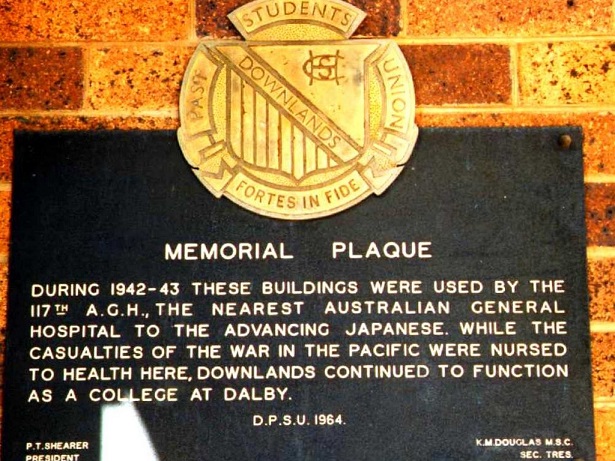
In the post last weekend we noted the impact of the war in the Pacific on MSC missions in China, the Philippines, Indonesia, Kiribati, PNG and Australia, Another impact was the use of Downlands requisitioned by the army.
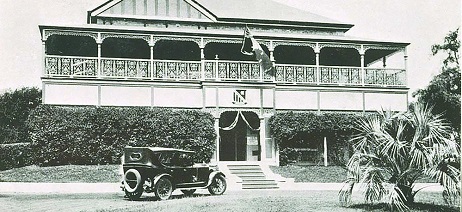
The Australian Army requisitioned Downlands College in Toowoomba and established the Medical Division for its 117th Australian General Hospital. The primary boys from Downlands College were evacuated to the Grande Hotel in Dalby. The sub-juniors were located in a Dalby boarding house, the junior boys were in a former maternity hospital and the sub-seniors, seniors and teaching staff were housed at the Queens Hotel.
The school was able to return to Toowoomba in 1944.
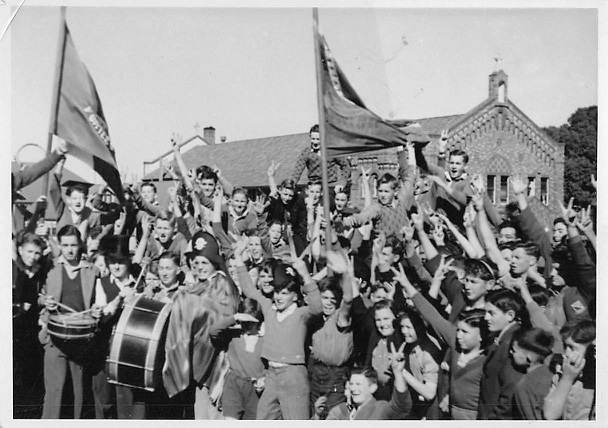
And a PS to the postscript - we received two photos of the Downlands students celebrating the end of the War, August 15th 1945.
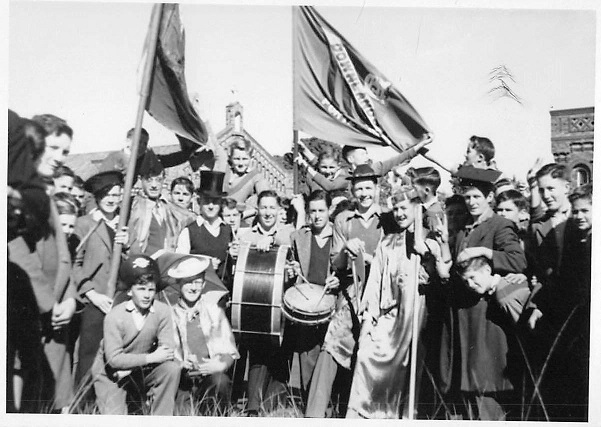
And the drummer is, in fact, Gerard Brennan, Sir Gerard Brennan, appointed the 10th Chief Justice of Australia in 1981. And, as we know, his son is Frank Brennan SJ, himself a former student of Downlands.
Death of Doctor John Hargrave AO MBE. 27 Years at the East Arm Leprosarium
Death of Doctor John Hargrave AO MBE. 27 Years at the East Arm Leprosarium
Malcolm Fyfe MSC, Vicar General, Diocese of Darwin, has written: I am sending you a Commentary I have put together, following on the recent death of Dr John Hargrave to recall and recognize the very significant contribution made by the Daughters of Our Lady of the Sacred Heart over a 27 year period out at the East Arm Leprosarium. It is very relevant to the history of the Darwin diocese. Malcolm DEATH OF DOCTOR JOHN HARGRAVE AO MBE His work with the Daughters of Our Lady of the Sacred Heart at the former Darwin East Arm Leprosarium
Last week on August 6, Dr John Hargrave passed away in Hobart, where he retired following on his mammoth lifetime of commitment to surgically improving the conditions of some of the most disadvantaged and disabled people in the Northern Territory. John was not a Catholic but I have heard him plausibly described as a Saint. I knew him from my earlier time in the Territory, 1978 to 1983 inclusive. During that period on a number of occasions as part of a roster, I said Mass out at the East Arm Leprosarium for the OLSH Sisters (Daughters of Our Lady of the Sacred Heart) who were the day to day carers of the lepers. Many patients attended the Masses as well. And we had a long talk when he revisited Darwin from retirement in Hobart, in May 2008, when the OLSH Sisters were celebrating their Centenary of ministry in the Northern Territory. On that occasion a representative group of us visited the Monument to the East Arm Leprosarium out at its original site. John shared with me his enduring admiration for the work that numerous OLSH Sisters had done for the patients at the Leprosarium over the many, many years that he had been working there as a microsurgeon, employing innovative techniques to restore sensation and movement to improve the quality of life of the indigenous patients. As most would know, Leprosy is an infectious disease that has been known since biblical times. It is characterized by disfiguring skin sores, nerve damage, and progressive debilitation. Leprosy was first observed in the Northern Territory in 1882 and soon after, cases of the disease were noted among Aborigines. However, for many years no action was taken in respect of Aboriginal sufferers. From 1884 Chinese lepers were confined on Mud Island in Darwin Harbour, pending their repatriation to China. In the late 1920s the government adopted a policy designed to confine all Northern Territory lepers, and it was resolved to establish a leprosarium on Channel Island (in Darwin Harbour), which had been the site of the Commonwealth's only Northern Territory quarantine station since 1914. In 1955 the Channel Island Leprosarium was closed and all inmates were moved to the East Arm Settlement on the mainland.
And so, the East Arm Leprosarium opened in 1955 and replaced the Channel Island Leprosarium. Situated several kilometres south east of Darwin, it was run by the Northern Territory Administration and was staffed by nursing Sisters from the Congregation of the Daughters of Our Lady of the Sacred Heart. Patients isolated at the Leprosarium included children as young as four years of age. Improvements in treatment and changing attitudes towards the disease led to the closing of East Arm Leprosarium in 1982, after which patients were treated in regular hospitals. OLSH Sister Kathleen Leahy, currently living and working in Alice Springs, has provided me with extensive information about Dr John Hargrave’s work done in conjunction with the care and support of the OLSH Sisters. I can only include segments of her commentary here. Sister writes: “Those of us who worked with DR John Hargrave over the years experienced a man totally given to researching, studying, teaching, experimenting and learning how the lives of those with the stigma of leprosy – even in the 20th century - could live to their full potential. John was not one to keep his knowledge to himself. He encouraged patients and families to become involved in the care and treatment of their family members. John’s vision was to have Aboriginal men and women with the knowledge and training to treat patients, and to ensure that their home community would carry on with the treatment when patients returned home. To witness the friendship and trust between both parties was startling for those of us coming from working in Hospitals in the southern States. Actually, it was during my time at East Arm that the numbers of actual leprosy patients began to decline. When the new Royal Darwin Hospital opened, Aboriginal patients preferred to go to East Arm with its openness, lawns, freedom of movement and weekend activities such as hunting or shopping. We not only saw cured leprosy patients preferring East Arm for general medical care, but also their family members.” Working alongside John have been many generations of Daughters of Our Lady of the Sacred Heart.
Sister Naomi wrote “It was a cause of wonderment for me, that I was appointed to the leprosarium so soon after my temporary profession. East Arm was just one big joy-filled family. I think the patients were the happiest people that I have known. At this time Doctor John Hargrave, Medical Superintendent, did the first reconstructive surgery for claw hands to be done in Australia. I was taught how to give post-surgery physiotherapy to those who had this surgery.” Sister Kathleen Leahy added: “It may be some years since East Arm existed, but the “East Arm Mob” comes together at times such as now to thank our God for having given us the privilege of working and learning how to bring to those whom society is unable to accept because of their race or illness, a knowledge that they do matter and we are there for them. Thank you, John, for having taught me so much about Aboriginal people and also encouraging me to go forward with the gifts I have been given.” And finally, a quotation from Diana Giese’s book “A Better Place to Live” page 34: “Dr John Hargrave trained indigenous health workers to assist in the leprosy field and also provided practical guides for diagnosing and treating the disease. Hargrave was quick to pay tribute for their “devoted and experienced care” of patients to the Sisters of Our Lady of the Sacred Heart, who worked throughout the Territory. He praised the way in which they had brought new ideas, polices and treatments to adjust to changing perceptions of, and more enlightened public attitudes to the disease”. |

Photograph supplied by Noel Humphry
(The Monument commemorates the Leprosarium established at East Arm in 1955 to provide accommodation and treatment facilities for leprosy patients who had previously lived on Channel Island. The Monument traces the history of leprosy in the Territory, which includes information on how people who were once thought to have an incurable disease requiring permanent isolation were successfully treated and able to re-join the wider community.)
10 Years of Site Postings - Interview with the editor of the Province Website.
10 Years of Site Postings - Interview with the editor of the Province Website.
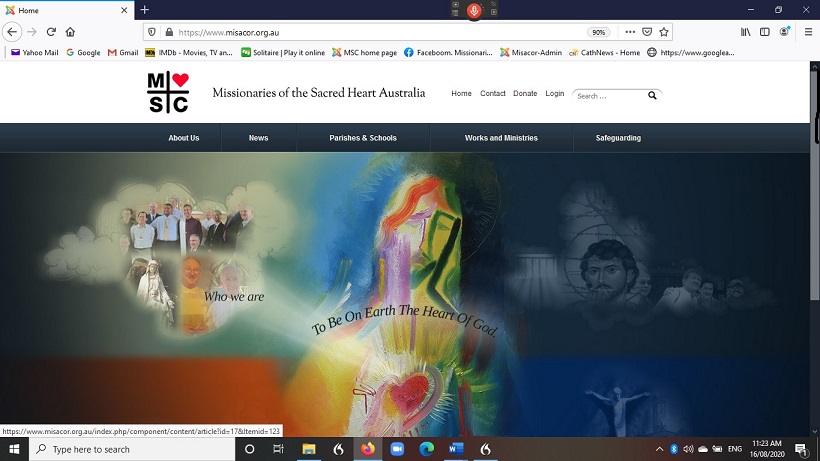
You have edited the website for 10 years?
Yes, beginning on August 17, 2010. In fact, the website had been set up by one of our IT priests from CFA, the Communication foundation for Asia, an MSC Media Ministry in Manila. This was 2006. With the establishing of the website, new items appeared until 2009 when the site seems to have gone into abeyance.
How did it start up again?
I remember getting in touch with the provincial of the time, Tim Brennan, asking about the site and its possible revival. He organised a meeting at the MSC house in Kew, attending himself, Brother John Dyson, Marist brother, who was responsible for our IT work, Mark McGuinness MSC and myself. I should have remembered Tim’s shrewdness from the past – he suggested I sit at the computer, compose a sample news item (a Formation meeting taking place at that time in Bangalore). When I had finished, he blithely remarked that now that I done it, I would be able to continue. “Inveigled” is the word that came to mind then and does so now.
I started putting items on the site on August 17, 2010. Now, a decade.
How did you begin?
We had a provincial chapter in September 2010 which led to posting items about the chapter for those not there, for visitors to the site. And there was the possibility of posting text as well as photos. And, in the early months, there were various stories about members of the province, recognition of confreres at the time of their deaths, other news items that I thought might be of interest to visitors to the site.
In fact, this is still the principle for selecting items but, of course, it has broadened considerably.

What changes have been made in presentation on the site?
In 2013, we had several meetings of the committee to look again at the contents of the site, headings and layout, homepage… This committee included Mark McGuinness, Chris Chaplin, Dominic Gleason, Rene Balboa, John Dyson and myself. John made all the technical connections. Chris Chaplin contacted artist Stephen Whatley in England for permission to use his illustration of the Sacred Heart for the homepage. The homepage was redesigned with four ministry pictures (which could be illuminated as one moves the mouse across the page) and a new set of headings which intended to be comprehensive. Not only headings, but also a range of pull-up headings.
The intention at the time was to be quite comprehensive – on the one hand, a great deal of information for those who are interested in the Missionaries of the Sacred Heart, text and illustrations of Who We Are, the same for What We Do (including the listing, illustrated, of all our ministries and website and email links). We also included items: Pray with us, Spirituality of the Heart, Justice Matters, Join Us, Media and Publications.
But, there was also the news, under the heading e-Magazine with the pull-up, Current News. Eventually, there were six items a week under this heading, the five weekdays and one item for the weekends. The other area where there was frequent posting was the Justice Matters.
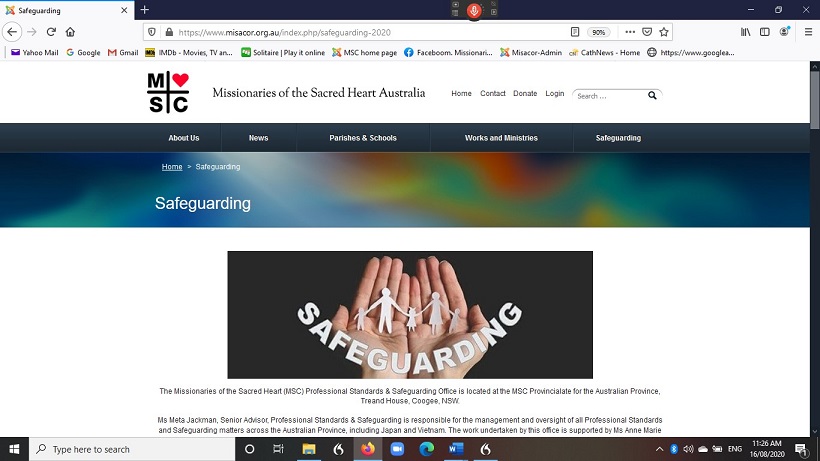
There seem to have been some changes more recently?
Yes, while the visuals of the homepage remain the same, there has been quite some simplification of the headings, with fewer pullups, to make access easier. You will notice that they are only five headings across the top of the page. There is the simple, About Us (which incorporates a lot of the basic information, about the congregation, about the founder, and about the Chevalier family, as well as the invitation to Pray with us and all the information and for Join Us.
The next two headings cover all our ministries, parishes and schools, and the range of all our works and ministries, mission, justice, adult education, media, music and publications.
There was a very significant addition in 2016, made in the light of the Royal Commission into Institutional Sexual Abuse, but given more prominence in 2020 with its own heading, Safeguarding, with MSC apology, documentation, redress information, as well as how to make contact in the context of professional standards, policies and procedures.
This simplification was the work of Brett Adamson from the Chevalier Institute.
Are all the postings still there in Cyberspace?
Yes, that is a benefit of the site – all those posts are still there, a contribution to the Province archives. The Search engine in the News section provides a way of finding posts. Type in a name or place and various entries will come up.
And the MSC Province Facebook Page?
Several years ago, Chris Chaplin and John Dyson were able to create a Facebook Page for the Province, so that when I posted an item on Current News Justice Matters, it went immediately as an item on the Facebook page.
Which meant that the site for was for those who found it easier to visit sites and Facebook for those who prefer Social Media, the two outlets covering, we hope, all potential visitors. While the site itself lists a number of hits for each item (no specific information on names), with the Facebook Page, anyone can read the Comments and check with the different emojis, who has liked, even loved, the item.
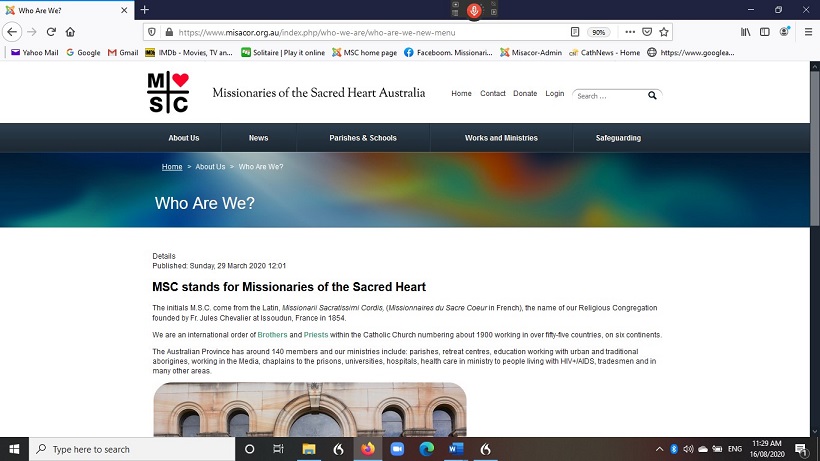
Have you any observations about which items make an impact – and any which don’t?
The most read postings are those which are personal, especially about members of the Australian province. And, of those, it is the death notices and funerals which receive the most hits. Special events, of course, are also popular, tributes to those who turn 80, 85, 90 – and those who turn 95. Jubilees of profession and ordination are also important. Photo stories of our confreres in Vietnam are also popular.
On the other hand, I have found over the 10 years, that social justice issues do not receive so many hits, slow movers, and the same with, surprisingly, books published by members of the province. I find it important to try to find a heading which will entice visitors to the site to click on the item, to find a number of photos to illustrate the story.
I should mention that I rely on my Facebook page and friends’postings to find a range of stories and photos, and Facebook pages from other members of the MSC around the world.
And the next 10 years?
Looking for volunteers to be my successor! Any takers?
MSC Perspective, World War II Pacific. 75th anniversary of VJ Day, end of the war.
MSC Perspective, World War II Pacific. 75th anniversary of VJ Day, end of the war.
Between December 7th 1941 and September 1942, the Japanese had bombed many Asian countries and as far south as Darwin.
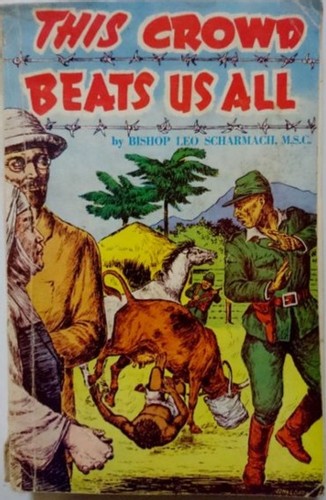
The war had some profound effects on MSC ministry in PNG, Indonesia, the Philippines, Kiribati, China and Australia. Some of this has been documented. Unfortunately, much of it has not been researched, or material readily available.
Here are some indications:
Papua New Guinea.
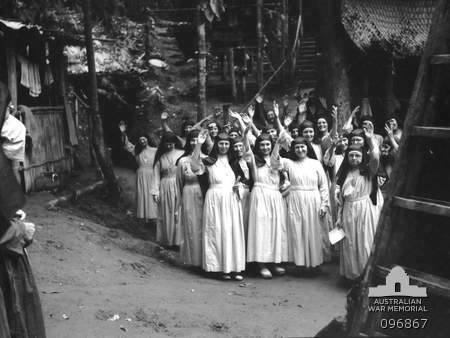
Many of the MSC, OLSH, MSC Sisters were interned in Ramale Valley, New Britain, (the subject of Bishop Leo Scharmach’s book This Crowd Beats Us All and the 2010 film, Sisters of War).
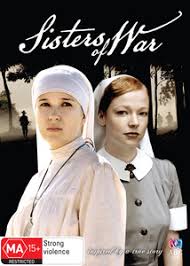
Fr Ted Harris was executed by the Japanese (the book is Every Man for Himself). Fr David McCullagh and Br Clifford Brennan were on the ship Montevideo Maru which was torpedoed by the Americans.
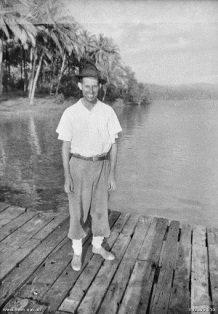
The Japanese occupied many Pacific Islands, including in Eastern Papua.
Kiribati
The Allies pushing the Japanese back across the Pacific included battle in Tarawa (the subject of several films like With the Marines in Tarawa, 1944). Kiribati was a French MSC Mission.

The Philippines
The Japanese occupied the Philippines. Again, quite a few films on battles like Bataan. The Philippines were a Dutch MSC mission.
China
The Japanese had invaded China in the 1930s. German MSC missionaries worked in China.
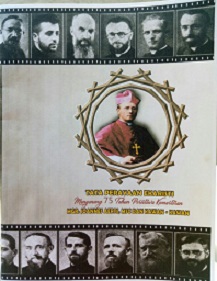
Indonesia
The best-known MSC priests and brothers interned and executed were Mons Johannes Aerts and his companions at Langgur. The islands which became Indonesia was a Dutch MSC mission.
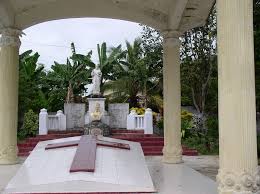
Australia
Darwin was bombed in 1942 (with Fr John McGrath on Bathurst Island trying to warn the authorities that the bombers were coming).

Fr Jim Littleton in his book on military chaplains, lists 20 Australian MSC who served as chaplains.
Japan
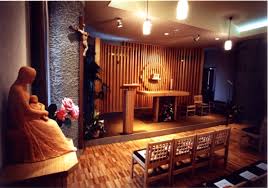
In the aftermath of the war, a mission to Japan was established with priests from Australia (and, later, from Indonesia, Philippines, India, Brazil).

